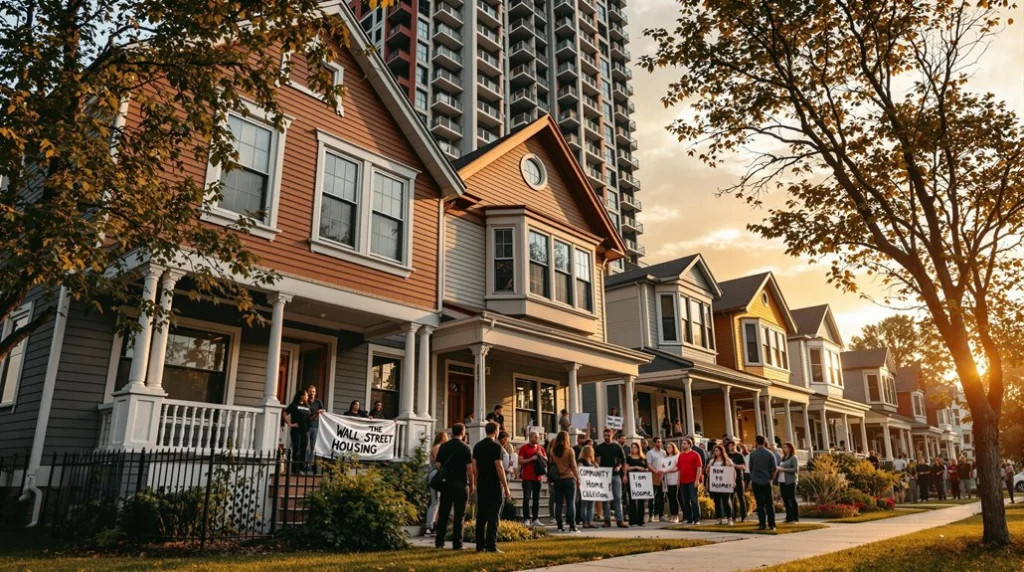Key Takeaways
- Largest Capital Pool: The $3.6 billion raised exceeds the roughly $2.6 billion gathered for a predecessor vehicle.
- Total Lending Capacity: The fund’s capacity exceeds $7 billion when combined with $1.4 billion of Goldman’s own capital and approximately $2 billion in leverage.
- Target Returns: The fund is targeting returns of around 10% to 12% after fees.

Goldman Sachs Raises $3.6 Billion for New Real Estate Credit Fund
Goldman Sachs Group Inc.’s alternatives business has raised $3.6 billion for its latest real estate credit fund, marking the largest pool of capital the firm has amassed for this effort.
This new fund, known as West Street Real Estate Credit Partners IV, comes at a time when traditional banks are retreating from commercial real estate lending, leaving many landlords struggling to secure financing amid rising interest rates.
Richard Spencer, Chief Investment Officer for Real Estate Credit at Goldman Sachs Alternatives, noted, “The strategy really is to capitalize on what we think is a growing supply-and-demand gap for real estate debt financing. ” This demand is being driven by various factors, including rising interest rates and increased competition among borrowers. As Spencer highlighted, the implications of this market shift are significant, particularly in light of the ‘$1. 5 trillion debt crisis explained’, which could reshape the landscape of real estate investment. By proactively addressing this gap, Goldman Sachs aims to position itself at the forefront of innovative financing solutions that cater to evolving market needs.
Investment Strategy
The fund aims to originate, underwrite, and hold loans backed by high-quality real estate.
It will primarily focus on first-lien mortgages secured by “transitional” properties undergoing changes such as refurbishment, change of use, or development.
Additionally, the fund will provide mezzanine financing for leased and stabilized properties.
The vehicle has already committed more than $1.8 billion to various projects.
Jim Garman, Global Head of Real Estate at Goldman Sachs Alternatives, highlighted the fund’s broader geographical scope compared to its predecessor, which includes investments in OECD countries in the Asia-Pacific region, with a particular focus on Australia due to its strong creditor protections and regulatory pressures on traditional lenders to reduce risk.
Focus on Transitional Properties
Goldman Sachs intends to leverage the fund to capitalize on opportunities in markets such as New York and Paris, focusing on sectors including residential, industrial, hospitality, and select office properties benefiting from shifts in technology, demographics, and sustainability.
The fund’s strategy aligns with evolving trends in the real estate market, positioning it for success even amidst current market dislocations.
Investor Backing
The fund is supported by a diverse group of investors, including sovereign wealth funds, insurance companies, pension plans, family offices, and wealth management clients.
This strong backing reflects confidence in Goldman Sachs’ ability to navigate the challenges and opportunities within the real estate debt market.
Implications for Commercial Real Estate in the United States
The launch of Goldman Sachs’ West Street Real Estate Credit Partners IV fund comes at a critical juncture for the commercial real estate market in the United States.
As traditional banks pull back from lending due to heightened risk and increased interest rates, the sector faces significant financing challenges.
This has left many landlords and developers scrambling for alternative sources of capital to fund their projects.
Addressing the Financing Gap
Goldman Sachs’ $7 billion lending capacity is poised to fill the financing void created by the retreat of traditional banks.
By focusing on first-lien mortgages for transitional properties, Goldman Sachs is targeting a niche that requires flexible and innovative financing solutions.
These properties, which include those undergoing refurbishment, change of use, or development, often struggle to secure financing in the current market environment.
Stabilizing the Market
The influx of capital from Goldman Sachs can provide much-needed stability to the commercial real estate market.
RELATED CONTENT
With $1.8 billion already committed, the fund is actively deploying resources to high-quality projects, potentially preventing stalled developments and supporting the completion of crucial real estate initiatives.
This could lead to increased confidence in the market, encouraging other investors to return.
Implications for Investors
For investors, the launch of Goldman Sachs’ new fund presents both opportunities and challenges:
Opportunities for High Returns: With targeted returns of 10% to 12% after fees, the fund offers attractive yields compared to traditional real estate investments. This is particularly appealing in a market where many traditional avenues are underperforming due to economic uncertainties.
Risk Mitigation: Investing in a fund managed by Goldman Sachs provides a level of risk mitigation through professional management and a diversified portfolio. The fund’s focus on high-quality, transitional properties can offer more stability compared to other high-risk real estate investments.
Broadening Investment Horizons: The fund’s ability to invest in OECD countries in the Asia-Pacific region, especially Australia, allows investors to diversify their real estate portfolios geographically. This can be a strategic move to mitigate risks associated with over-concentration in the U.S. market.
Market Influence: As Goldman Sachs deploys its capital, it could influence broader market trends, potentially leading to a shift in how commercial real estate is financed and developed in the U.S. This could create new opportunities for investors willing to adapt to changing market dynamics.
Assessment
Goldman Sachs’ significant fundraising achievement and strategic focus on high-quality, transitional real estate underscore the firm’s commitment to filling the financing gaps left by traditional banks.
The $7 billion lending capacity of the West Street Real Estate Credit Partners IV fund positions Goldman Sachs as a major player in the commercial real estate lending space, ready to capitalize on market dislocations and evolving real estate trends.
The targeted returns of 10%-12% after fees indicate the high-yield potential of the fund’s investments, making it an attractive option for a variety of institutional investors.
No related posts.





















